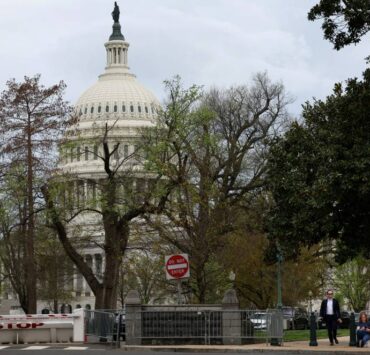Manila Bay’s social, environmental ruin

The good news is that Manila Bay is “alive and vibrant,” according to a new scientific study. However, the same study said reclamation projects the size of two Metro Manila cities threaten its life and sustainability.
The study released by the Department of Environment and Natural Resources (DENR) on Wednesday warned that these projects could change the natural flow of water currents in the bay. This would create a bottleneck in the flow of water, cause huge floods in nearby cities, and could become breeding grounds for bacteria since it will take time for the floodwaters to recede. This degradation would then kill the flora and fauna—51 coral genera and 167 fish species—in the bay’s ecosystem.
Another crucial impact is the loss of mangroves that serve as natural defense against typhoons, storm surges, and coastal erosion.
Twenty-one projects are expected to rise from around 6,100 hectares of reclaimed land, or about the combined size of Manila and Marikina. Two of these projects are ongoing, 12 have been approved, and seven are new proposals.
In 2023, President Marcos ordered the suspension of the projects. But per reports, at least one—the Pasay Harbor City reclamation—has been allowed to continue after securing necessary permits and approval from the Philippine Reclamation Authority (PRA). It was not clear what the other ongoing project is.
Rich biodiversity
These findings are not necessarily new. As early as 2019, environmentalists have warned against the reclamation projects, saying that they could destroy the bay’s rich biodiversity and endanger nearby communities. Earlier studies have cited flooding, storm surges, land subsidence, and liquefaction as among the dangers that those who live in the coastal area are likely to face. They also warned that any reclamation done in the bay could block alternative rescue routes should a massive earthquake hit Metro Manila.
The health of Manila Bay communities is also at risk, with scientists detecting pathogenic bacteria, such as Enterobacteriaceae and Stenotrophomonas, and 11 kinds of metals, including highly toxic cadmium and lead, in the water.
Despite this, the DENR study found that, from April to October 2024, Manila Bay fisherfolk caught an average of 2 kilograms to 4 kg of fish per hour, a much better yield than the average of 1 kg to 2 kg per hour in other fishing grounds in Masinloc, Siargao, Lingayen, Ragay, and San Miguel Bay.
Loss of fishing grounds
Still, the reclamation has already displaced thousands of fisherfolk families in Bulacan and Cavite, and should it continue, more will face the loss of fishing grounds. In addition, the bay’s existing conditions could cause food poisoning among those consuming shellfish from there.
This only adds to the sea of challenges that Filipino fisherfolk already face, from dwindling catch to access to traditional fishing grounds, particularly in the West Philippine Sea. All the more that authorities should help protect their rights and livelihood because this also means protecting the country’s food safety and security.
“Negosyo lang din naman ang dahilan diyan kung bakit nila ginagawa ‘yan, hindi naman para sa mamamayang Pilipino … Kung titingnan natin ‘yung napakasamang epekto nito sa buong bansa, ‘yung milyong mangingisda na walang pangkabuhayan, ‘yung kasiguraduhan sa pagkain ang nakataya dito (The only reason why they are doing this is for business, not for the Filipinos … If we weigh the ill effects [these reclamation projects] would have on the entire country, at stake are the livelihood of millions of fisherfolk and our food security),” said Ronnel Arambulo, vice chair of the activist fisherfolk group Pamalakaya in a TV interview in 2023.
‘Laudato Si’’
For now, the DENR said it would continue to evaluate and scrutinize the project proposals. Environment Secretary Maria Antonia Yulo Loyzaga said some proponents have shown “willingness” to make some changes so they could comply with proper flood, water, solid waste, and traffic management plans.
The government cannot be careless with the country’s resources, especially when it impacts not only the environment but also public health, safety, and livelihood.
In “Laudato Si’,” Pope Francis wrote that environmental problems cannot be separated from the individual. “The human environment and the natural environment deteriorate together; we cannot adequately combat environmental degradation unless we attend to causes related to human and social degradation,” the Pope wrote.
Indeed, moving forward, the late pontiff’s encyclical should provide a very fitting reminder of the relationship between the environment and humanity—and that the degradation of Manila Bay leads not just to the destruction of the environment but also to countless lives that depend on and are affected by it.
Considering several studies’ damning findings, the government should seriously consider not just suspending but ending all reclamation projects in order to protect our fragile cities and environment.





















